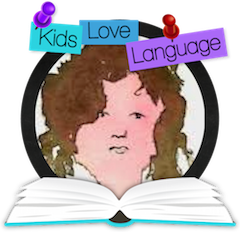Did you know February is Vision Awareness Month? If you’re a speech-language pathologist or teacher working with students with cerebral palsy or other brain-based disabilities, chances are you have a student with C.V.I.
Vision, more than any other system, allows the individual to take in huge amounts of stimuli from the environment for the brain to act upon. In the process, the individual gazes at things, does so in specific sequences, and focuses on specific details in order for the brain to make decisions about what to do.
Vision develops as a process of neurological development and maturation. Our ability to process visual stimuli and attach meaning to them - called “seeing” - involves not only a healthy vision system, but also a healthy neurological system.
When a child is born with a neurological disorder, it is likely that a visual impairment will exist. Development of the visual system, learning through interaction with the environment, is also impaired when a child has motor impairment. Eyes do not tell the individual what to do. The brain’s experiences do. Without these experiences, or when the experiences are impaired in some way, the brain cannot tell the individual how to act and react.
“The current leading cause of visual impairment among children is not a disease or condition of the eyes, but Cortical Vision Impairment (CVI) - also known as cerebral visual impairment - in which visual dysfunction is caused by damage or injury to the brain.” (American Printing House)
Cortical vision impairment has nothing to do with acuity. It is vision impairment caused by damage or injury to the brain.
Because the areas for vision in our brains are not just localized to one small area, chances are if there is any brain damage at all that some aspect of vision in the brain is impacted.
CVI can be found in individuals who have had a head injury, brain infection, brain maldevelopment, or asphyxia.
There are some specific characteristics of CVI; including color preferences, attraction of movement, response latency, reduced visual fields, difficulty with complex visual stimuli, gazing at lights or at nothing at all, reflexive responses to visual stimuli, attraction to novel visual stimuli and visual-motor mismatch.
Cortical vision impairment is the most common cause of vision impairment in children in the U.S. It is seen in children who are premature, who have a neurological disorder, or have had acquired brain injury. Given that 40%-80% of the brain is required to process vision, brain damage in almost any area can lead to CVI. The brain loses its ability to integrate and organize visual input received from the eyes.
Improvement is both possible and likely with training. This requires discovering the CVI at an early age and providing direct intervention. (Roman-Lantzy, C., 2007) Children with CVI have the capacity to see more effectively and can learn effectively given an adequate plan and intervention.
In general, individuals with CVI experience success with AAC systems that utilize partner assisted scanning; tactile systems with voice output; auditory scanning high tech voice output devices; and two-switch auditory step scanning where the user can control the speed of scanning for processing, that utilize visual tracking of a visual stimulus across the scan (such as a flashlight or finger or bright object).
Burkhart also suggests “using a communication device (BIGmack Communicator) using color coding. For example pair a 2D picture with a similar 3D object using bright colors. Have the communicator in the same color (i.e. Have a picture of a red cup, have a red cup and a red communicator that says, ‘I want a drink,’ when accessed.”
Additional tips for AAC use with these students include:
- Use Partner Assisted Scanning or use devices with auditory scanning. These modes of access allow for success by removing the need to visually attend to and shift from pictures the students can’t see; there is now no need for communication success to be dependent upon symbol recognition.
- Abandon the kind of standard objectives you set for other AAC users. These students will have difficulty or lack of success with objectives to match objects to pictures, make requests using picture boards a specified number of times, or identify named pictures in arrays. Matching and identification tasks are largely nonfunctional, anyway.
- Avoid vocabulary that only relates to a single activity and then doesn’t get used again; use of core vocabulary or high frequency vocabulary is beneficial for these individuals.
- Avoid limited choices that don’t allow engagement. This is true for many students. Multiple choice responses do not encourage language development or elaborate interactions.
- Provide social contact vocabulary so that the individual can maintain social interaction and engagement with others, even when unable to see what is going on.
- Provide vocabulary that is stable and can be added to as skills develop. This, again, encourages the use of core vocabulary, where words have multiple meaning uses with a limited number of visual distinctions.
- Provide vocabulary sets that are organized and stay the same each time.






Susan, I loved your infographic on CVI, I pinned it. You are always a wealth of information, Thanks!
ReplyDeleteThank you! Trying to share information the best I know how. Thanks for reading.
DeleteGreat tips in this post, Susan. It reminded me of my summer camp teaching days with TBI population. LOVE the ingigrsphic too.
ReplyDeleteThank you! And thanks for reading.
DeleteWow! Thanks for this post. Can you come work at my school???:)
ReplyDeleteI do actually do a lot of trainings in schools - in my area. Thanks for reading, Marcy!
Delete